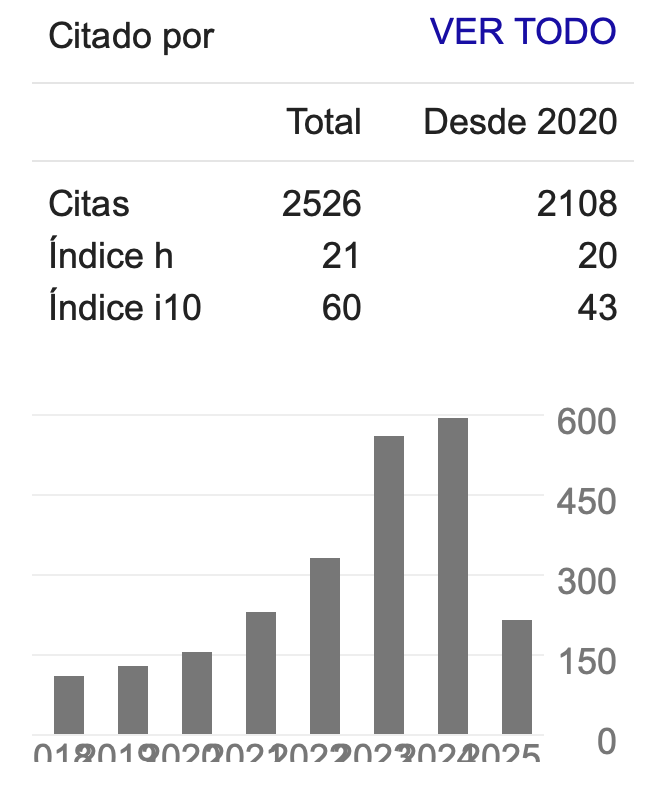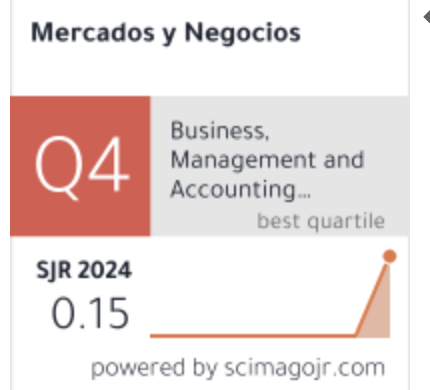Foreign Direct Investment: International Strategies by Business Groups
DOI:
https://doi.org/10.32870/myn.v0i38.7228Keywords:
Business group, foreign direct investment, acquisitions, minority purchase of shares.Abstract
This research analyses the decision of foreign direct investment (FDI) followed by business groups, identifies two forms: acquisition and minority purchase of foreign company shares. Analyses how it affects the performance of such groups. Also includes the concentration of property since it forms part of corporate governance. In order to achieve this, a data panel analysis with information of 39 business groups and a total of 3,443 subsidiaries and that have also made FDI in a period ranging from 2012 to 2015. The findings were that the minority purchase of shares achieves a positive relationship with performance and clearly shows that the company's concentrated ownership has a negative relation to performance.References
Aaker, D. A. (1996). Measuring brand equity across products and markets. California management review, 38(3), 103.
Attig, N., Fischer, K. & Gadhoum, Y. (2002) On the determinants, costs, and benefits of pyramidal ownership. Manuscript, Mars: Working Paper.
Buckley, P. J., Elia, S., & Kafouros, M. (2014). Acquisitions by emerging market multinationals: Implications for firm performance. Journal of World Business, 49(4), 611-632.
Carney, M., Gedajlovic, E. R., Heugens, P. P., Van Essen, M., & Van Oosterhout, J. H. (2011). Business group affiliation, performance, context, and strategy: A meta-analysis. Academy of Management Journal, 54(3), 437-460.
Cerutti, M. (1986). Producción capitalista y articulación del empresariado en Monterrey (1890 – 1910). En Labastida J. (comp) (1986). Grupos económicos y organizaciones empresariales en México. México: Universidad Nacional Autónoma de México.
Chang, Y. B., & Cho, W. (2017). The Risk Implications of Mergers and Acquisitions with Information Technology Firms. Journal of Management Information Systems, 34(1), 232–267.
Chang, S. J., & Rhee, J. H. (2011). Rapid FDI expansion and firm performance. Journal of International Business Studies, 979-994.
Chavarín Rodríguez, R. (2010). Banca, grupos económicos y gobierno corporativo en México, México: Centro de Estudios Espinosa Yglesias.
Chu, C. C., Teng, Y. M., & Lee, H. L. (2016). Corporate Governance and Mergers and Acquisitions Performance in Banks: Evidence under the Special Regulatory Environment in Taiwan. Emerging Markets Finance & Trade. 52, 2309–2320.
Chung, C. N., Luo, X. (2008). Institutional Logics or Agency Costs: e Influence of Corporate Governance Models on Business Group Restructuring in Emerging Economies. Organization Science. 19(5), 766 – 784. doi: 10.1287/orsc/l070.0342
Chung, H. M., & Chan, S. T. (2012). Ownership structure, family leadership, and performance of affiliate firms in large family business groups. Asia Pacific Journal of Management, 29(2), 303-329.
Cordero, S., & Santín, R. (1986). Concentración, grupos monopólicos y capital financiero del sector privado en México. En Labastida J. (comp) (1986). Grupos económicos y organizaciones empresariales en México. México: Universidad Nacional Autónoma de México.
Cortes, L. M., Agudelo, D. A., & Mongrut, S. (2017). Waves and Determinants in Mergers and Acquisitions: The Case of Latin America. Emerging Markets Finance & Trade. 53, 1667–1690.
Deseatnicov, I., & Akiba, H. (2016). Exchange rate, political environment and FDI decision. International Economics. 148, 16-30.
Dutta, S. (1997). Family business in India. SAGE Publications Pvt. Limited.
Eiteman, D. K., Stonehill, A. I., Moffett, M. H. (2007). Multinational business finance. USA: Pearson/Addison-Wesley.
Fisman, R. (2001). Estimating the value of political connections. The American economic review. 91(4), 1095-1102.
Ganguli, S. (2007). Export Performance Analysis of Business Groups and Stand-Alone Organizations in the Indian Iron and Steel Industry. ICFAI Journal of International Business, 2(4).
Gaur, A., Kumar, V. (2009). International Diversification, Business Group Affiliation and Firm Performance: Empirical Evidence from India, British Journal of Management. (20), 172–186, DOI: 10.1111/j.1467-8551.2007.00558.x
Gaur, J. (2010). Financial Performance Measures of Business Group Companies: A Study of Indian Non-Metallic Mineral Products Industries, The IUP Journal of Business Strategy. VII(4). 45-53.
Gaytan-Cortes, J., Vargas-Barraza, J. A., & Fregoso-Jasso, G. S. (2016). Capital structure of the communication sector in Mexico. SGBED wishes to recognize the following sponsors, 147.
Granovetter, M. (1995). Coase revisited: Business groups in the modern economy. Industrial and corporate change. 4(1), 93-130.
Guriev, S., & Rachinsky, A. (2005). The role of oligarchs in Russian capitalism. The Journal of Economic Perspectives, 19(1), 131-150.
Jensen, M. C., & Meckling, W. H. (1976). Theory of the firm: Managerial behavior, agency costs and ownership structure. Journal of financial economics, 3(4), 305-360.
Keister, L. A. (1998). Engineering growth: Business group structure and firm performance in China's transition economy. American journal of sociology, 104(2), 404-440.
Khanna, T. & Palepu, K. (1999). Emerging Market Business Groups, Foreign Investors, and Corporate Governance. National Bureau of Economic Research. Working Paper, 6955.
Khanna, T., & Palepu, K. (2000). Is group affiliation profitable in emerging markets? An analysis of diversified Indian business groups. Journal of Finance, 55(2), 867–892.
Kumar, V., Gaur, A. S., & Pattnaik, C. (2012). Product diversification and international expansion of business groups. Management International Review, 52(2), 175-192.
Lansberg, I., & Gersick, K. E. (2006). Sello de familia: Cultura y gobierno corporativo en la empresa familiar Latinoamericana. Harvard Business Review América Latina, 8, 30-42.
Li, S., Chen, F., & Trifts, J. (2017). An Empirical Investigation of the Impact of Cross-Border Mergers and Acquisitions on Supply Chain. Northeast Decision Sciences Institute 2017 Annual Conference, 852 - 875.
Li, M., Ramaswamy, K., & Pettit, P., (2006). Business groups and market failures: A focus on vertical and horizontal strategies, Asia Pacific Journal of Management. 23, 439–452, DOI 10.1007/s10490-006-9016-1.
Masulis, R. W., Pham, P. K., & Zein, J. (2011). Family business groups around the world: Financing advantages, control motivations, and organizational choices. The Review of Financial Studies, 24(11), 3556-3600.
Morck, R., Percy, M., Tian, G., & Yeung, B. (2005). The Rise and Fall of the Widely Held Firm: a history of corporate ownership in Canada. In A history of corporate governance around the world: Family business groups to professional managers (pp. 65-148). University of Chicago Press.
Peng, Y. S., Yang, K. P., & Liang, C. C. (2011). The Learning Effect on Business Groups. Asia Pacific Management Review, 16(1), 1-21.
Pelayo, J., & Camarena, M. (2013). The family-owned company and its implications in the attitude steward with the performance of the company, Ecorfan Journal, 4(9), 1039-1049.
Morck, R. & Yeung, B. (2003). Agency Problems in Large Family Business Groups. Entrepreneurship: Theory and Practice, 27(4), 367 – 382.
Rosenkopf, L. & Padula, G. (2008). Investigating the Microstructure of Network Evolution: Alliance Formation in the Mobile Communications Industry. Organization Science, 19(5), 669–687.
UNCTAD (2016). World Investment report 2016, Investor Nationality: Policy Challenges. United Nations Conference on Trade and Developmet.
UNCTAD. (2009). Statistics on the Operations of Transnational Corporations. UNCTAD Training Manual on Statistics for FDI and the Operations of TNCs, 2. 1-126.
Yiu, D. W. (2011). Multinational advantages of Chinese business groups: A theoretical exploration. Management and Organization Review, 7(2), 249-277.
Published
How to Cite
Issue
Section
License
Mercados y Negocios by Department of Mercadotecnia y Negocios Internacionales. University of Guadalajara is licensed under a License Creative Commons Attribution-NonCommercial 4.0 International.
The author retains the copyright.








